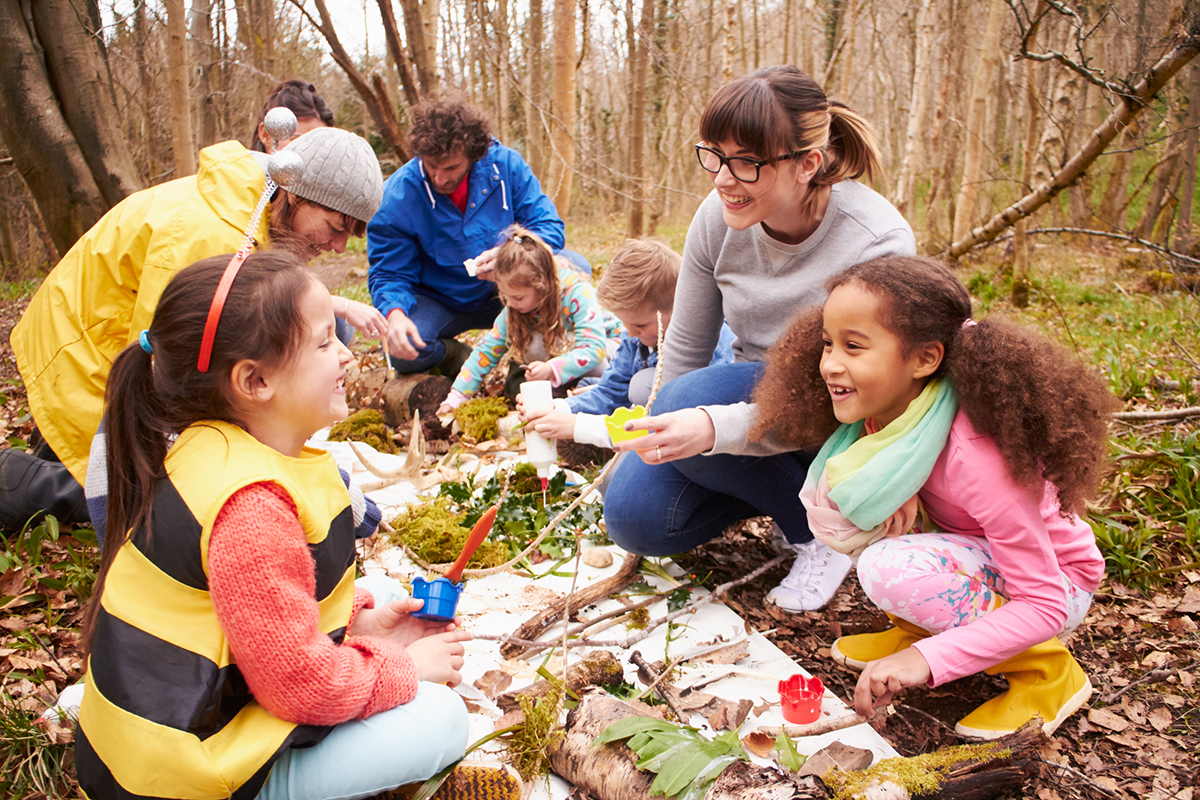Creating a More Just and Merciful World
Tips From Educators on How to Move Your Classroom Outside During the Pandemic

The COVID-19 pandemic has many educators looking to outdoor classrooms as a safer alternative to indoor class without the drawbacks of remote online learning. Here are four essential recommendations from seasoned educators for transitioning to outdoor teaching.
- Collaborate:
Educators experienced with outdoor learning agree that collaborating with fellow teachers, parents and the local community will help you set up an outdoor classroom space and acquire teaching materials. Amanda Yates, a teacher at Vermont’s Albert Bridge Elementary School, explained that teachers, parent volunteers and community volunteers joined forces to prepare outdoor class spaces. Parents also contributed at Albert Bridge by donating warm, waterproof clothing and footwear so that every student could be prepared for outdoor learning (Yates).
Project Learning Tree encourages teachers to seek out buy-in from other teachers and administrators and recruit volunteers as first steps for establishing an outdoor classroom. Local experts in landscaping, gardening and outdoor knowledge can also be valuable resources throughout the school year and local businesses can be a source of donated materials like lumber and wood chips (Project Learning Tree).
- Construct:
Doing the bulk of the work upfront to set up a permanent outdoor classroom allows for less day-to-day work during the school year so that you and your class can focus on learning. Jeannie McCarthy from the outdoor learning organization Out Teach suggests raising an initial budget of $2500 for your outdoor classroom.
McCarthy explains that the first step is to find a location which is accessible to your students and provides shade for a majority of the day. Next, find a seating solution like tree stumps, large buckets, logs or mats, which can be decorated and positioned so students are 6 feet apart. McCarthy also recommends installing a permanent whiteboard on wooden posts, which can be installed by parent volunteers.
One advantage of an outdoor classroom is the ability to install STEM learning features like raised vegetable beds, rain barrels, compost bins and weather stations which provide hands-on learning opportunities (McCarthy). To minimize costs, try to source as many donated materials as you can for these projects.
- Lesson Plan:
In an outdoor classroom you can teach the same lessons you would indoors, but your students will appreciate the extra effort to design some lessons that incorporate the outdoor space. Yates takes students to a nearby stream to teach them about erosion, buoyancy, and wildlife observation and uses sticks, pinecones, acorns, etc. as math manipulatives.
Learning in nature also provides opportunities for cross-disciplinary lessons centered around observation of your environment. Vermont elementary teacher Erin Rounds integrated art, language and science by having students observe seeds, draw them, describe them, describe them with adjectives and discuss how they travel. Yates takes her students on walking field trips, incorporating literacy, math, science and unstructured play into the walk.
- Make Space for Reflection:
An outdoor setting is a more peaceful space for children than a traditional classroom, provided you make sure not to set up your space too near any major distractions like playgrounds (McCarthy). Rounds explains that “the peace of an outdoor classroom can help to calm anxious minds and bodies,” using a chime to have her students practice sitting in silence and listening to all the sounds around them. Yates also has her students practice reflection with quiet journaling time to review the day, both what they learned and how they felt. Meditation and quiet time alleviate stress and help students feel comfortable.
Carlow University Education Programs
Carlow University offers education degree programs including BA, Certificate and MED to give you the tools to excel in a variety of classroom environments. Undergrad students can get their bachelor’s degree in Early Childhood Education or Child Development and Learning, while graduate students can seek teaching certifications in eight different subjects or gain their Masters in Education in Curriculum & Instruction, including master’s in K-12 Art Education and master’s in Early Childhood Education.
Additional Resources:
National COVID-19 Outdoor Learning Initiative free library – Green Schoolyards America
North American Association for Environmental Education – eeGuidance for Reopening Schools
